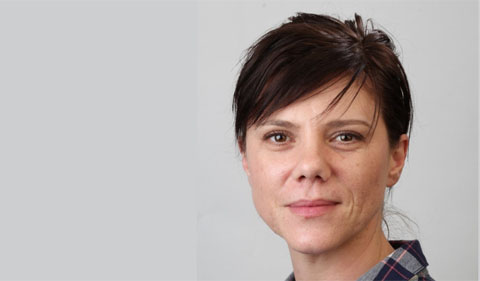The Nanoscale & Quantum Phenomena Institute Seminar series presents Dr. Andrada-Oana Mandru discussing “Coexistence of Distinct Skyrmion Phases Observed in Hybrid Ferromagnetic/Ferrimagnetic Multilayers ” on March 25 at 4:10 p.m.
- For virtual meeting information, contact the host, Dr. Art Smith.
Mandru is a Scientist with the Swiss Federal Laboratories.
Abstract: I will first give a short overview of the research activities and systems available within our group. I will then focus on recent results concerning skyrmions in magnetic multilayers, which is our group’s main research topic. Systems in which magnetic skyrmions occur at room temperature could enable new computing architectures as well as compact and energetically efficient storage such as racetrack memories. Two fundamental problems prevent the successful implementation of skyrmions in a racetrack device. A first problem is not being able to restrict the skyrmion motion along straight paths, leading to skyrmions being lost at the device edge. One possible solution is the use of antiferromagnetically-coupled skyrmions [1]. A second problem is not having stable inter-skyrmion distances, which translates into fluctuating distances among bits. A potential solution to this second problem was revealed with the first experimental observation of coexisting skyrmions and chiral bobbers [2], opening the possibility that a chain of binary data bits could be encoded by two different solitons. However, this has only been observed in B20-type crystalline materials and at low temperatures. With our work, we present a ferro/ferri/ferromagnetic multilayer system that can host two distinct skyrmion phases at room temperature. The two phases represent a tubular skyrmion (running through the entire trilayer structure) and a partial skyrmion (running through only two of the sublayers), as revealed from quantitative magnetic force microscopy data complemented by micromagnetic simulations. Furthermore, the tubular skyrmion can be converted into a partial skyrmion. Such a system forms under particular conditions and for specific magnetic parameters of the individual sublayers. Exploring this parameter space, I will also discuss briefly some very recent results showing how the densities of the two skyrmions can be tuned via different routes. Given its high tunability and compatibility with current technologies, this hybrid system could serve as a promising platform for future skyrmionic devices.




















Comments